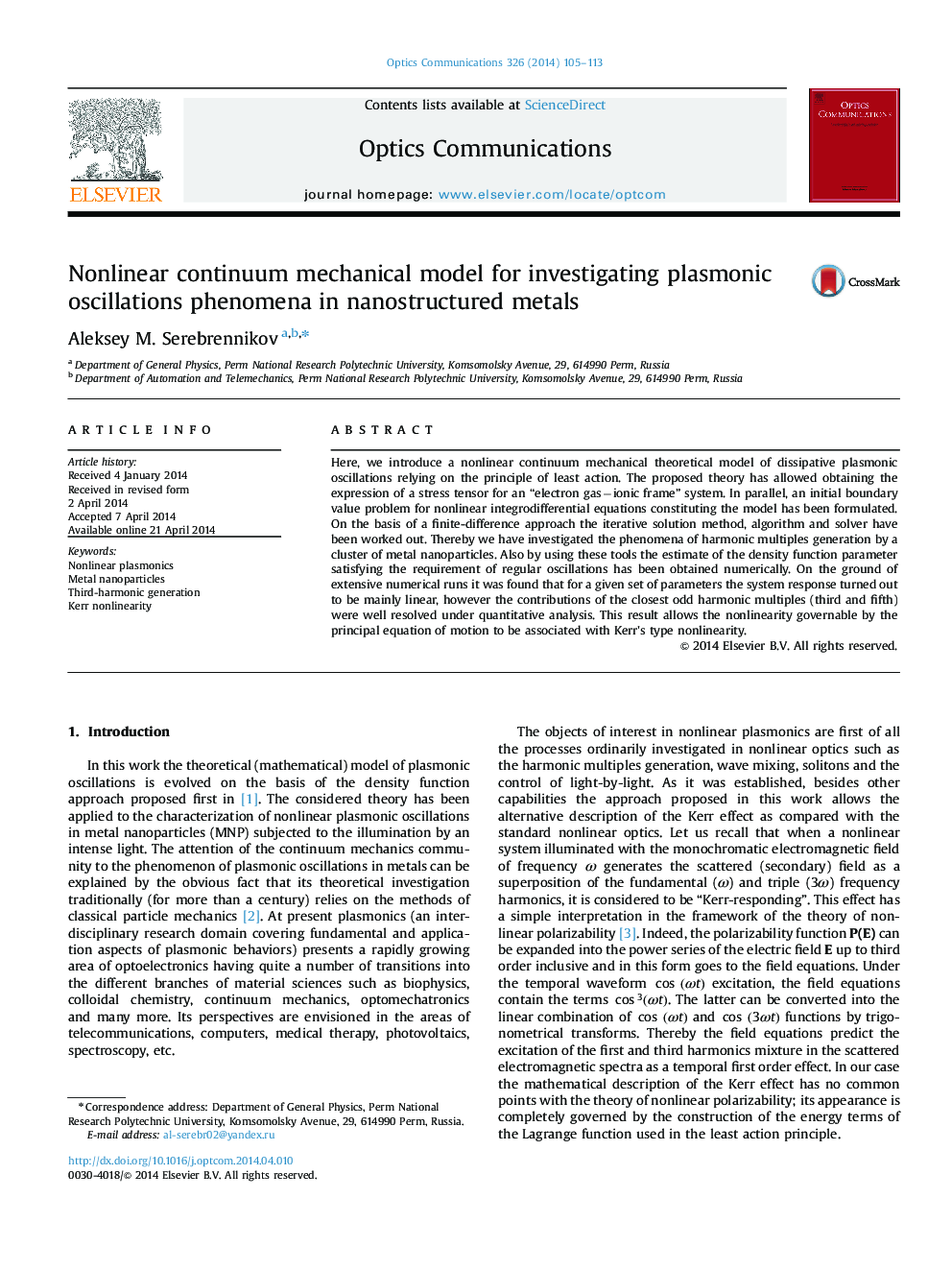| Article ID | Journal | Published Year | Pages | File Type |
|---|---|---|---|---|
| 1534548 | Optics Communications | 2014 | 9 Pages |
Here, we introduce a nonlinear continuum mechanical theoretical model of dissipative plasmonic oscillations relying on the principle of least action. The proposed theory has allowed obtaining the expression of a stress tensor for an “electron gas−ionic frame” system. In parallel, an initial boundary value problem for nonlinear integrodifferential equations constituting the model has been formulated. On the basis of a finite-difference approach the iterative solution method, algorithm and solver have been worked out. Thereby we have investigated the phenomena of harmonic multiples generation by a cluster of metal nanoparticles. Also by using these tools the estimate of the density function parameter satisfying the requirement of regular oscillations has been obtained numerically. On the ground of extensive numerical runs it was found that for a given set of parameters the system response turned out to be mainly linear, however the contributions of the closest odd harmonic multiples (third and fifth) were well resolved under quantitative analysis. This result allows the nonlinearity governable by the principal equation of motion to be associated with Kerr׳s type nonlinearity.
